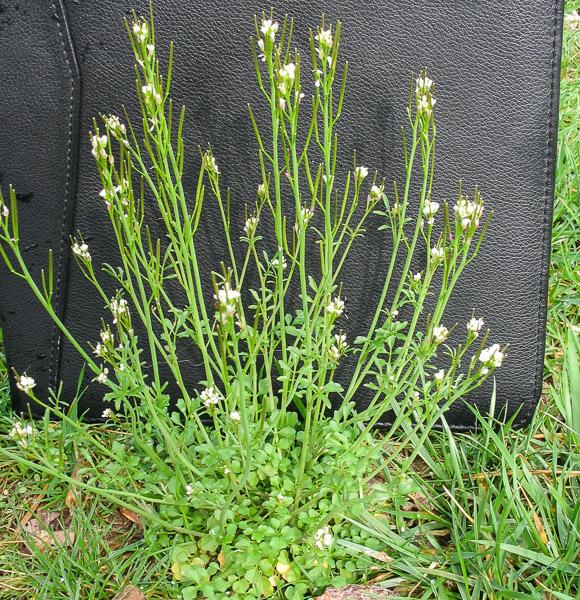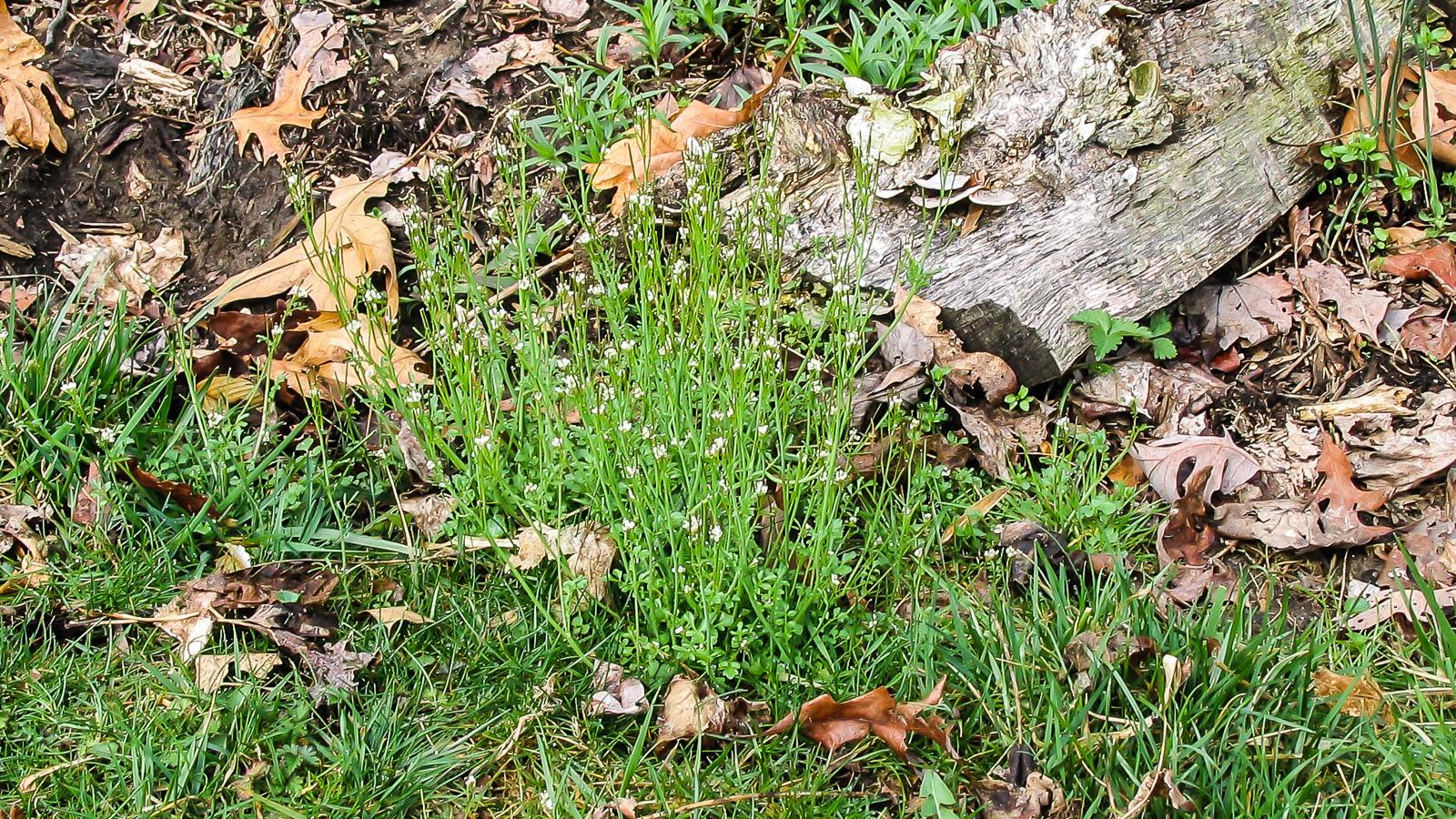Life cycle
Primarily a winter annual.
Growth habit
Basal rosette of pinnate leaves; 1-3 pairs of leaflets with
terminal, larger leaflet; tiny, 4-petaled white flowers in clusters at top of stems,
followed by slender, upright seed capsules.

Reproduction
Seed; when mature capsules pop explosively.

Conditions that favor growth
Shade and mowing lawn too short.
Management in lawns
Lawn care practices
Maintain healthy, dense turf that can compete and prevent weed establishment.
Mechanical management
Hand pulling or using an appropriate weeding tool to remove the rosette. This is a viable option at the beginning of an infestation and on young weeds. Hand pulling when the soil is moist makes the task easier. Remove immediately once this goes of flower or cut back or mow the flower stalks.
Manage Weeds Without Chemicals
Chemical treatment in lawns
A preemergent applied in late summer/early fall can help prevent hairy bittercress from germinating, however, you will not be able to sow grass seed. Or spot treat actively growing weeds with a liquid, selective, postemergent, broadleaf weed killer in the spring before it goes to seed (photo at top of page). Look for a product with one or more of the following active ingredients: 2, 4-D, MCPP (mecoprop), Dicamba* or Triclopyr.
*Do not spray herbicides containing dicamba over the root zone of trees and shrubs. Roots can absorb the product possibly causing plant damage. Read the product label for precautions.
